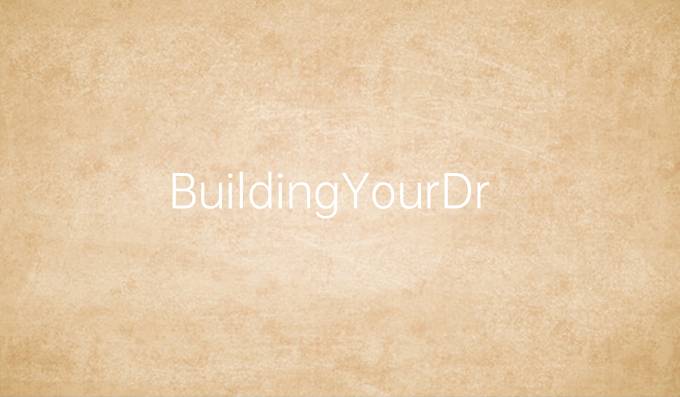
4007-702-802
Follow us on:



The source of the article:ManLang Publishing date:2024-10-30 Shared by:

Abstra: Building a website can seem like a daunting task, but it is an achievable goal with the right guidance and knowledge. This article serves as a comprehensive stepbystep guide for anyone looking to create an effeive and visually appealing website. We explore the key aspes of web development including planning, design principles, coding and programming, and deployment and maintenance. By following these struured processes, you will gain a deeper understanding of how to build your dream website from scratch, whether for personal use, business, or portfolio purposes. Each seion is filled with praical tips and detailed explanations to ensure that you have the best tools and knowledge at your disposal.
The first step in building your dream website is thorough planning. This phase is crucial as it sets the foundation for everything that follows. Begin by defining the purpose of your website. Is it informational, a portfolio, a blog, or an ecommerce site? Understanding your primary goal will guide all your future decisions.

Next, identify your target audience. Knowing who you are building the website for will influence the design, content, and funionality. Consider conduing research to understand the needs and preferences of your audience, which will help you tailor your website to meet their expeations.
Lastly, create a site map. A site map outlines the struure of your website and the relationship between different pages. This logical layout will help you visualize the user’s journey through your site and ensure that you include all necessary seions. A clear plan will save you time in the development process and enhance user experience.
Once you have a solid plan in place, the next step is to focus on design principles. Good design is not just about aesthetics; it involves creating an intuitive and userfriendly interface. Begin with choosing a color scheme that refles your brand and resonates with your audience. Consistency in color usage across your website can enhance recognition and professionalism.
Typography is another critical aspe of design. Sele fonts that are easy to read and complement your website's overall design. Maintain consistency in font usage for headings and body text to create a cohesive look. Always consider accessibility; choose text colors that offer sufficient contrast against the background.
Lastly, prioritize responsive design. With the increasing number of mobile users, your website must be accessible and look great on devices of all sizes. Utilize a flexible grid layout and scalable images to ensure users have a seamless experience, whether they are on a desktop or a smartphone.
After the planning and design are complete, the next phase is coding and development. Depending on your skill level and the complexity of the website, you can choose between different approaches. For beginners, using a content management system (CMS) like WordPress or Wix can simplify the process as they offer userfriendly interfaces and templates.
For those with coding skills, you can develop your website from scratch using , CSS, and JavaScript. This method provides complete control over design and funionality. Familiarize yourself with responsive web design techniques and make use of libraries like Bootstrap for faster development.
Furthermore, ensure that your website is optimized for performance. Compress images, minimize code, and use caching to improve loading times. A faster website offers a better user experience and can positively impa your ranking on search engines.
The final stage is deployment and maintenance. Once your website is built, it’s time to launch. Choose a reliable hosting provider that suits your needs and budget. Domain name registration is also essential; ensure that your domain refles your brand and is easy to remember.
After the launch, regular maintenance is crucial to keeping your website uptodate. This includes updating content, ensuring software is current, and monitoring site performance. Analytics tools can help you track visitor behavior and gather insights on how to improve your site.
Additionally, consider incorporating security measures to prote your site from potential threats. Regular backups, using SSL certificates, and maintaining a secure coding praice will help safeguard your website and its data.
Summary: Building your dream website involves meticulous planning, thoughtful design, skilled coding, and diligent maintenance. By following this stepbystep guide, you can navigate the web development process with confidence. Each stage offers unique challenges but also the opportunity for creativity and expression. By focusing on these aspes, you will not only create a beautiful website but also an effeive online presence that meets the needs of your audience.
Key words: YourDream YourDreamWebsite YourDreamWebsiteStepbyStep
What you might be interested in
Unlocking the Benefits of SEM托管: A Comprehensive Guide to Maximizing Your Online Advertising Success
2025-04-16Mastering WeChat Content Marketing: Proven Strategies and Techniques for Engaging Your Audience
2025-04-16Unlocking SEO Resources: Essential Tools and Strategies for Dominating Search Engine Rankings
2025-04-16Mastering Content Marketing Strategies: Unlocking Your Brands Potential Through Effeive Engagement
2025-04-16Strategic Innovations in Marketing Promotion: Unlocking New Avenues for Brand Growth and Engagement
2025-04-16Maximize Your Online Presence: Unlock Success with Our Expert SEO推广公司 Services
2025-04-16Comprehensive Solutions for Business Website Development: Elevate Your Online Presence with Expert D
2025-04-16Maximizing Business Reach: The Ultimate Guide to 网络营销外包 for Strategic Growth and Success
2025-04-16What you might also be interested in
Precision Marketing Strategies: Crafting Tailored Campaigns for Targeted Business Growth
2025-02-04Unlocking Success: Top SEO供应商 to Elevate Your Online Presence and Drive Traffic
2024-12-04Exploring Effeive Content Marketing Strategies: Techniques to Engage and Retain Your Audience
2024-09-13Mastering Digital Content Marketing: Strategies for Success in the Evolving Internet Landscape
2025-02-11Exploring Effeive SEO Promotion Techniques: Where to Find the Best Strategies
2024-09-10Unveiling the Essence of Content Marketing: Strategies to Engage, Inspire, and Convert
2025-04-13